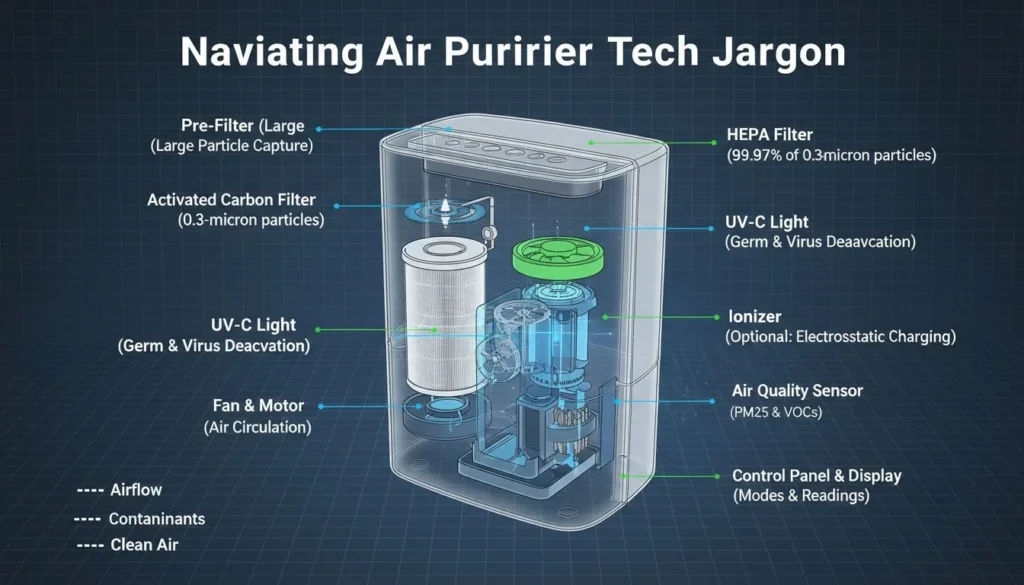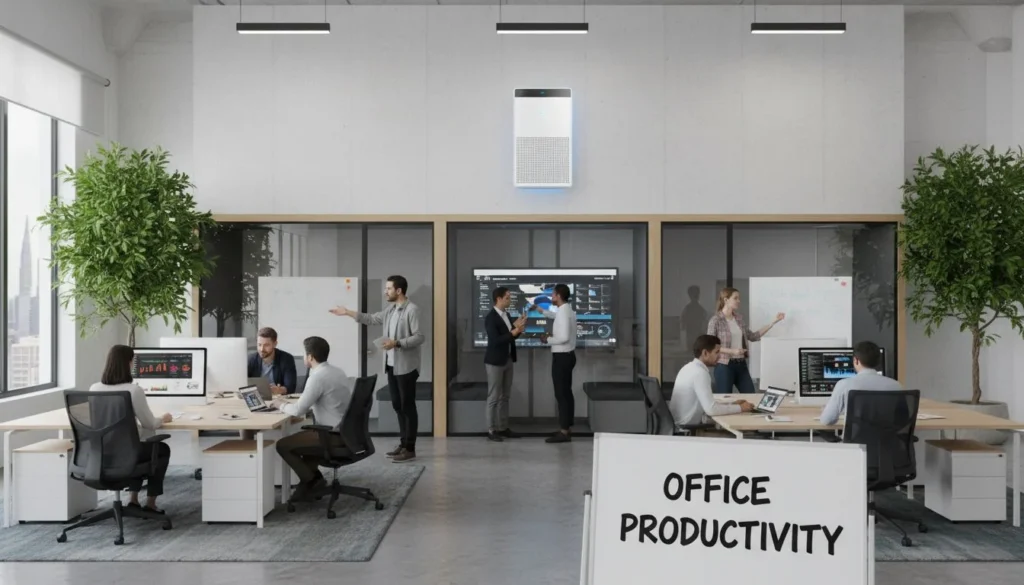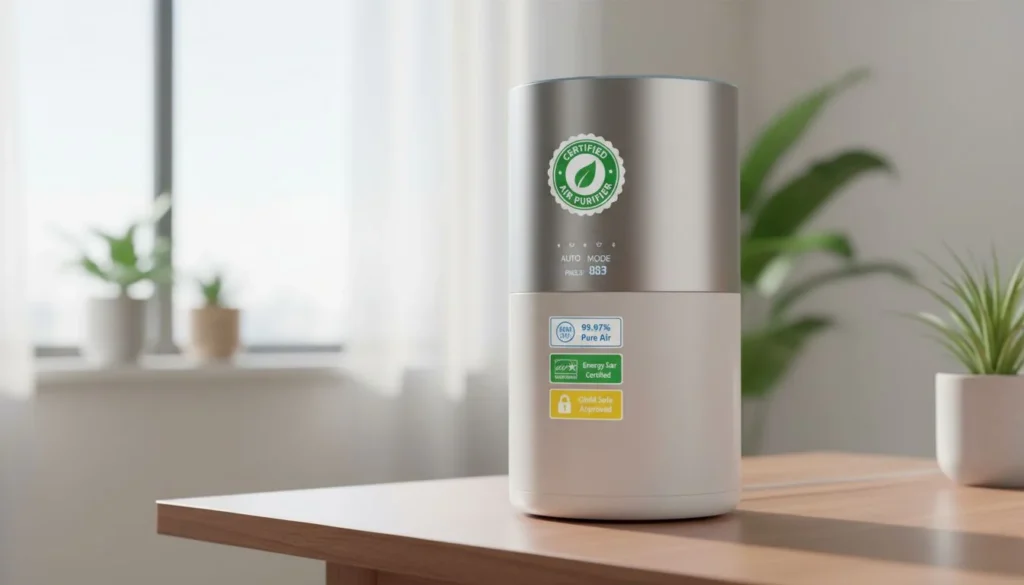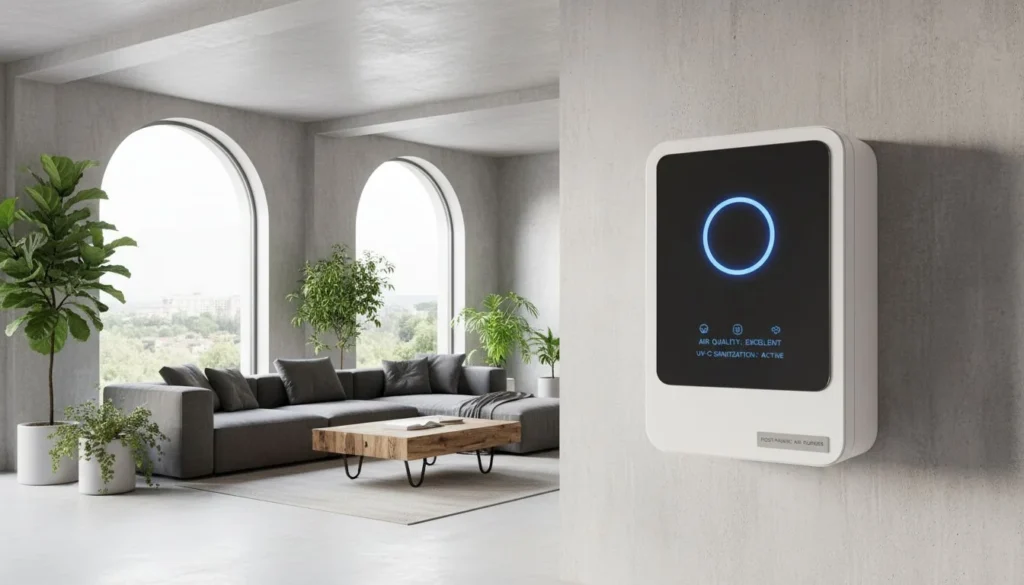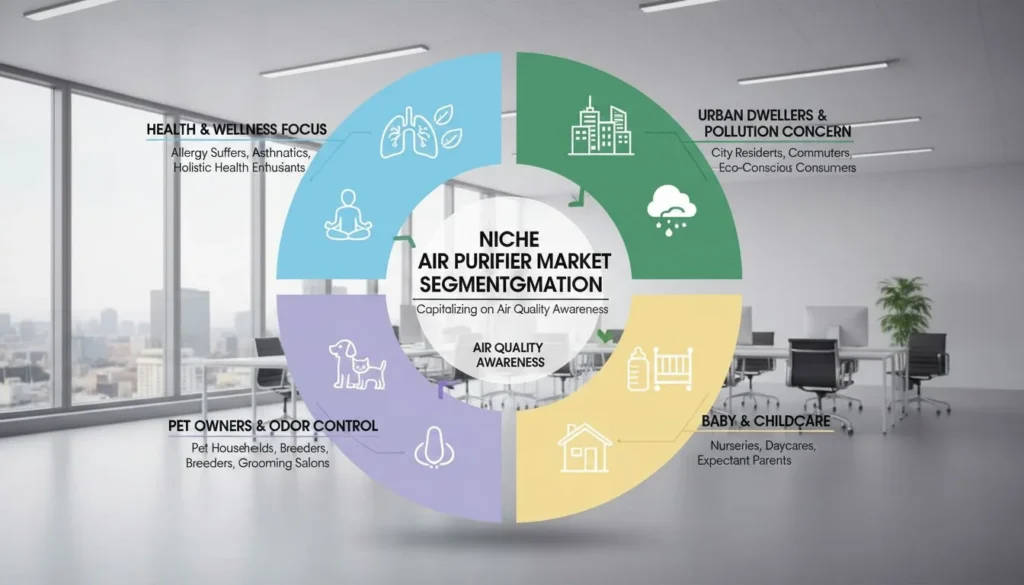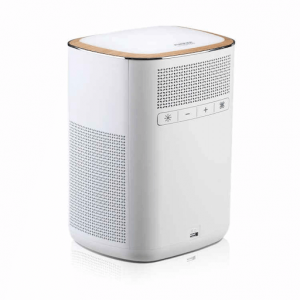
경쟁이 치열한 오늘날의 공기 정화 시장에서 맞춤형 공기청정기를 통해 브랜드는 고유한 특징, 맞춤형 디자인, 타겟 고객에게 직접적으로 어필할 수 있는 특정 기능으로 차별화할 수 있습니다. 프리미엄 세그먼트를 공략하든 틈새 고객의 니즈를 충족하든 맞춤형 공기청정기는 브랜드에 필요한 고유한 이점을 제공할 수 있습니다.
하지만 콘셉트부터 출시까지 맞춤형 공기청정기를 제작하려면 전문 지식과 리소스, 신뢰할 수 있는 OEM/ODM 파트너가 필요합니다. 이 가이드는 성공적인 제품 출시로 이어지는 효과적인 커뮤니케이션, 예산 책정, 기술 선택과 같은 주요 고려 사항을 강조하면서 HisoAir를 통해 맞춤형 공기청정기를 실현하는 단계별 프로세스를 안내합니다.
섹션 1: 맞춤형 공기청정기를 구축해야 하는 이유
맞춤형 공기청정기를 사용하면 특정 시장과 고객 선호도에 맞게 제품 특징, 디자인, 기능을 맞춤화하여 브랜드 고유의 가치 제안을 만들 수 있습니다. 제품 차별화가 중요한 시장에서 고유한 공기청정기 모델은 브랜드를 차별화하고 고객 충성도를 높일 수 있습니다.
1.1 맞춤형 공기청정기의 장점
맞춤형 공기청정기를 통해 브랜드는 고객에게 가장 중요한 기능을 자유롭게 설계하고 통합할 수 있습니다. 건강에 민감한 소비자를 위한 고급 필터, 기술에 정통한 사용자를 위한 스마트 IoT 기능, 현대적인 인테리어에 어울리는 세련된 디자인 등 맞춤형 모델은 표준 제품 이상의 것을 원하는 고객을 유치하고 유지할 수 있습니다.
1.2 숙련된 OEM/ODM 파트너와 협력할 때의 이점
히소에어와 같은 숙련된 파트너를 선택하면 처음부터 끝까지 원활하고 효율적인 프로세스를 보장할 수 있습니다. 공기 정화 제조 분야에서 20년 이상 경력을 쌓아온 HisoAir는 기술 전문성, 강력한 생산 능력, 최고의 글로벌 브랜드에 고품질 맞춤형 공기 정화기를 제공한 실적을 보유하고 있습니다.
섹션 2: 맞춤형 공기청정기 프로젝트 개발의 주요 과제
맞춤형 공기청정기를 제작하는 것은 보람이 있지만 복잡한 과정이며, 몇 가지 잠재적인 어려움이 있습니다. 그중에서도 가장 중요한 것은 프로젝트의 성패를 좌우할 수 있는 커뮤니케이션입니다.
2.1 명확한 커뮤니케이션의 중요성
커뮤니케이션은 성공적인 OEM/ODM 파트너십의 근간입니다. 오해와 비용이 많이 드는 오류를 피하려면 각 단계에서 명확한 커뮤니케이션이 중요합니다. 초기 제품 요구 사항부터 최종 생산 조정에 이르기까지 HisoAir의 숙련된 프로젝트 관리자는 모든 세부 사항이 브랜드의 기대에 부합하도록 보장합니다.
2.2 국가 간 협업에서 문화 및 언어 차이 관리하기
국제적인 제조 파트너와 함께 일하다 보면 문화적, 언어적 문제가 발생할 수 있습니다. 히소에어](http://hisoair.com "히소에어")에서는 일정 업데이트, 상세한 문서화, 프로젝트 관리 도구 사용을 통해 양측이 일정, 설계 요구 사항 및 마일스톤을 일치시키는 원활한 커뮤니케이션을 우선시합니다.
섹션 3: 맞춤형 공기청정기 프로젝트 프로세스에 대한 단계별 가이드
3.1 시장 조사 및 제품 컨셉 개발
맞춤형 공기청정기를 구축하기 위한 첫 번째 단계는 시장을 이해하는 것입니다. HisoAir를 사용하면 소비자 선호도 및 경쟁사 분석에 대한 인사이트를 확보하여 시장 수요를 충족하고 경쟁에서 돋보일 수 있는 제품 기능을 파악할 수 있습니다.
3.2 공동 제품 디자인 및 프로토타이핑
HisoAir의 디자인 팀은 고객과 긴밀히 협력하여 브랜드의 비전을 반영하는 제품 디자인을 만듭니다. 3D 모델링, 산업 디자인, 프로토타이핑을 통해 초기 콘셉트에 생명을 불어넣습니다. 프로토타입 제작 과정에서 고객은 제품의 기능, 성능, 디자인 요소를 테스트하고 개선하여 기능적, 미적 기준을 모두 충족하는지 확인할 수 있습니다.
3.3 사전 프로덕션 엔지니어링 및 자재 소싱
설계가 대량 생산에 적합하도록 하기 위해 HisoAir의 엔지니어링 팀은 제조 효율성을 위해 각 구성 요소를 최적화합니다. 고급 HEPA 필터, 내구성이 뛰어난 모터, 소음 감소 요소와 같은 고품질 소재와 부품을 조달하여 제품이 내구성, 안전성, 성능의 기준을 충족하도록 보장합니다.
섹션 4: 맞춤형 공기청정기 프로젝트에 대한 투자 및 예산 책정
4.1 예산 책정 시 고려해야 할 요소
맞춤형 공기청정기 프로젝트의 비용은 재료 품질, 기술 특징, 인증 요건, 생산량 등 여러 요인에 따라 달라집니다. HisoAir는 고객이 각 비용 요소를 이해하도록 돕고 품질 저하 없이 예산 범위 내에서 사용할 수 있는 솔루션을 제공합니다.
4.2 히소항공의 투명한 예산 편성 프로세스
히소에어는 투명성을 강조하여 생산 비용을 명확하게 분석하고 예상치 못한 비용이 발생하지 않도록 노력합니다. 설계 및 재료부터 제조 및 인증에 이르기까지 각 예산 항목에 대한 개요가 나와 있어 고객이 정확하게 투자 계획을 세울 수 있습니다.
4.3 사용자 지정으로 ROI 극대화를 위한 팁
고객의 요구와 시장 트렌드에 부합하는 기능에 투자하면 ROI를 극대화할 수 있습니다. 예를 들어 스마트 IoT 기능을 통합하면 연결성을 중시하는 기술 선도적인 고객을 유치할 수 있고, 항균 필터는 멸균 환경 유지에 중점을 둔 의료 및 교육 환경에 유용합니다. HisoAir는 고객이 시장에서 매력도와 수명을 높이는 기능의 우선순위를 정하도록 안내하여 투자 수익을 극대화할 수 있도록 지원합니다.
섹션 5: 차별화 기술 - 혁신을 통한 엣지 구축
경쟁이 치열한 공기청정기 시장에서 돋보이려면 혁신적인 기술이 필수적입니다. 히스토에어의 R&D 팀은 고객이 첨단 기술을 활용하여 기존 공기청정기보다 확실한 이점을 제공하는 제품을 개발할 수 있도록 지원합니다.
5.1 히소에어 독점 기술 활용하기
[데시벨 캔슬레이션™(https://hisoair.com/decibel-cancellation-technology/ "데시벨 캔슬레이션™")과 같은 히소에어의 독점 기술은 공기 정화의 일반적인 문제점을 해결하는 데 도움이 됩니다. 이 소음 감소 기술은 작동 소음을 5~10dB까지 최소화하여 직장, 학교 및 의료 시설에 이상적입니다. 또한 히소에어만의 독특한 공기 덕트 디자인은 청정 공기 전달을 극대화하는 동시에 공기청정기의 설치 공간을 작고 눈에 띄지 않게 유지합니다.
5.2 스마트 제어 및 데이터 기반 인사이트를 위한 IoT 통합
스마트 홈 또는 기술에 정통한 시장을 공략하고자 하는 브랜드에게 IoT 통합은 매우 중요한 요소입니다. [히소 에어의 IoT 지원 공기청정기](https://hisoair.com/air-purification-system/ "히소 에어의 IoT 지원 공기청정기")는 사용자 친화적인 앱을 통해 원격 모니터링, 실시간 공기질 인사이트, 맞춤형 설정을 모두 이용할 수 있습니다. 이러한 통합은 편리함을 제공할 뿐만 아니라 사용자가 실내 공기질에 대한 데이터 기반 의사 결정을 내릴 수 있도록 지원합니다.
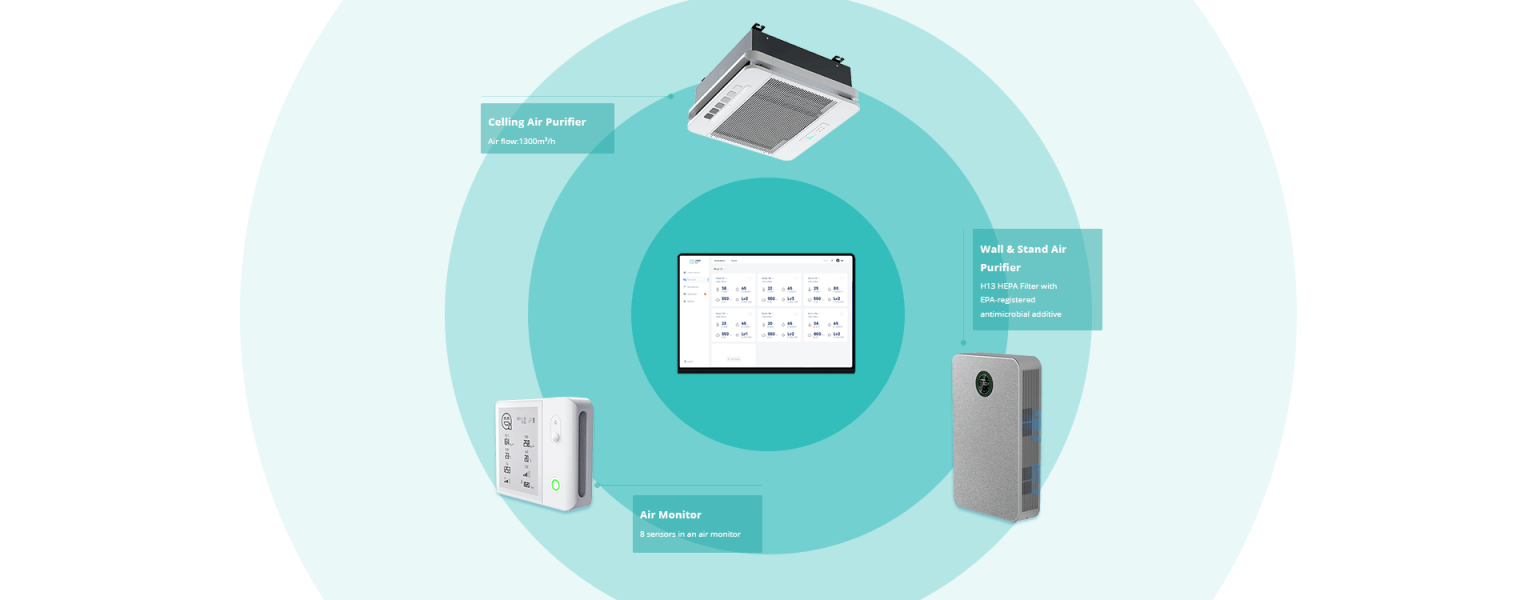
5.3 브랜드 목표에 부합하는 기술을 선택하는 방법
올바른 기술을 선택하는 것은 브랜드 포지셔닝과 타겟 인구 통계에 따라 달라집니다. 예를 들어 바쁜 전문가를 타깃으로 하는 브랜드는 조용한 작동과 원격 제어 기능을 우선시할 수 있고, 가족 건강을 중시하는 브랜드는 고급 HEPA 필터와 어린이 안전 잠금장치를 강조할 수 있습니다. 히소에어 팀은 고객과 긴밀히 협력하여 각 기술 기능이 고유한 브랜드 비전에 부합하는지 확인합니다.
섹션 6: 엔지니어링 및 사전 프로덕션 준비
설계와 기능 세트가 완성되면 HisoAir의 엔지니어링 팀은 효율성, 품질 및 규정 준수에 중점을 두고 대량 생산을 위한 제품을 준비합니다.
6.1 제조를 위한 설계(DFM)
제조를 위한 설계(DFM)는 히소에어 엔지니어링 팀이 각 구성 요소를 최적화하여 생산 편의성을 높이고 폐기물을 줄이는 중요한 단계입니다. 제조 설계를 간소화하여 대규모 생산에서 일관된 품질 표준을 보장하고 결함 및 지연의 위험을 최소화합니다.
6.2 자재 소싱 및 품질 보증
내구성과 신뢰성이 뛰어난 공기청정기를 만들기 위해서는 고품질 소재를 조달하는 것이 중요합니다. 히소에어는 내구성이 뛰어난 하우징 소재, 정밀 모터, 고성능 HEPA 및 탄소 필터와 같은 최고급 부품을 신뢰할 수 있는 공급업체로부터 조달합니다. 각 부품은 엄격한 품질 보증 검사를 거쳐 최종 제품이 히소에어와 고객의 높은 기준을 모두 충족하도록 보장합니다.
6.3 규정 준수 및 인증 준비하기
고객이 안심하고 글로벌 시장에 진출할 수 있도록 히소에어는 필요한 인증 획득에 대한 가이드를 제공합니다. CE, UL, AHAM 인증 등 어떤 인증이든 HisoAir의 사내 팀이 규정 준수를 지원하여 제품이 규제 표준을 준수하도록 보장합니다. 이러한 준비를 통해 맞춤형 공기청정기가 다양한 시장의 요구 사항을 충족할 수 있도록 준비할 수 있습니다.
섹션 7: 생산 및 품질 관리
설계 및 엔지니어링 단계가 완료되면 프로젝트는 본격적인 생산 단계로 전환됩니다. HisoAir의 강력한 품질 관리 프로세스는 생산되는 모든 유닛의 일관성과 신뢰성을 보장합니다.
7.1 프로토타이핑에서 대량 생산으로 확장하기
HisoAir의 생산 시설은 소량 및 대량 생산을 모두 처리할 수 있으며, 고객의 요구를 충족할 수 있는 유연한 타임라인을 갖추고 있습니다. 시제품에서 대량 생산으로 전환하는 동안 엄격한 감독을 유지하여 각 유닛이 원래 시제품과 동일한 품질 표준을 유지하도록 보장합니다.
7.2 품질 관리 및 테스트 프로토콜
품질 관리는 히소에어 생산 공정의 핵심입니다. 각 공기청정기는 CADR 검증 및 소음 수준 테스트부터 구조적 무결성 평가에 이르기까지 다양한 검사를 거칩니다. 이러한 엄격한 품질 관리 프로토콜은 제품이 다양한 조건에서 안정적으로 작동하고 기대되는 공기 정화 효율 표준을 유지하도록 보장합니다.
7.3 패키징 및 맞춤 브랜딩
포장은 브랜드 인지도에 중요한 역할을 합니다. HisoAir는 언박싱 경험을 향상시키는 맞춤형 포장 옵션을 제공하여 첫 순간부터 브랜드 아이덴티티를 강화합니다. 브랜드 박스부터 맞춤형 사용 설명서에 이르기까지 모든 세부 사항을 맞춤화하여 브랜드에 부합하는 기억에 남는 고객 경험을 선사합니다.
섹션 8: 출시 전략 및 출시 후 지원
성공적인 제품 출시를 위해서는 세심한 조정이 필요하며, HisoAir는 출시 전부터 출시 후 서비스까지 원활하게 진행할 수 있도록 지원합니다.
8.1 성공적인 제품 출시 조정하기
HisoAir는 고품질 제품 이미지, 기술 사양 및 마케팅을 쉽게 할 수 있는 지원 자료를 제공하여 고객이 원활한 출시를 준비할 수 있도록 지원합니다. 히소에어의 지원을 통해 브랜드는 관심을 끌고 초기 판매를 촉진하는 영향력 있는 제품 출시를 계획할 수 있습니다.
8.2 출시 후 지원 서비스
출시 후에도 지속적인 기술 지원, 교체 부품, 문제 해결 지원을 제공하는 등 고객의 성공을 위한 HisoAir의 노력은 계속됩니다. 당사의 팀은 모든 문제를 해결하여 제품이 고객에게 최적의 성능을 발휘할 수 있도록 지원합니다.
8.3 향후 프로젝트를 위한 장기적인 파트너십 구축
파트너십은 제품 출시로 끝나지 않습니다. HisoAir는 장기적인 관계를 중요하게 생각하며, 제품 라인을 확장하거나 기존 모델을 개선하는 데 도움을 드립니다. 기능을 업그레이드하든 새로운 디자인을 도입하든, 저희 팀은 진화하는 요구 사항을 지원할 준비가 되어 있습니다.
결론
컨셉부터 출시까지 맞춤형 공기청정기를 만드는 것은 복잡한 여정이 될 수 있지만 올바른 OEM/ODM 파트너와 함께라면 간소화되고 보람 있는 프로세스가 될 수 있습니다. 히소에어는 초기 설계부터 대량 생산에 이르기까지 맞춤형 공기청정기 프로젝트의 성공을 위한 전문 지식, 리소스, 품질에 대한 헌신을 제공합니다.
독자적인 기술, 투명한 예산 책정, 고객 만족을 위한 헌신적인 노력을 갖춘 HisoAir는 뛰어난 공기청정기를 개발하고자 하는 기업에게 이상적인 파트너입니다. 지금 바로 문의하여 상담을 예약하고 브랜드의 비전과 가치를 반영하는 고품질의 맞춤형 공기청정기를 제작해 보세요.
클릭 유도 문안(CTA): 맞춤형 공기청정기를 제작할 준비가 되셨나요? 귀사의 비전을 이해하는 신뢰할 수 있는 OEM 파트너와 함께 컨셉부터 출시까지 여정을 시작하려면 지금 HisoAir의 전문가에게 문의하세요. 눈에 띄고 고객의 요구를 충족하는 제품을 만들 수 있도록 도와드리겠습니다.


